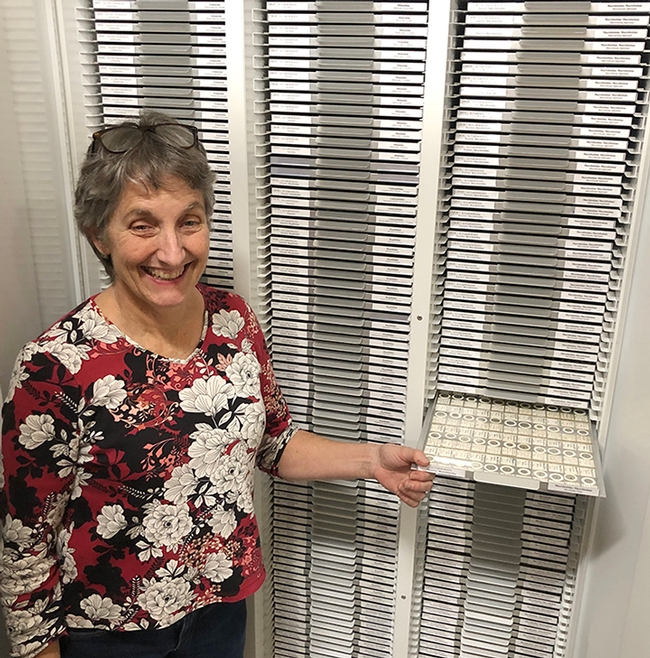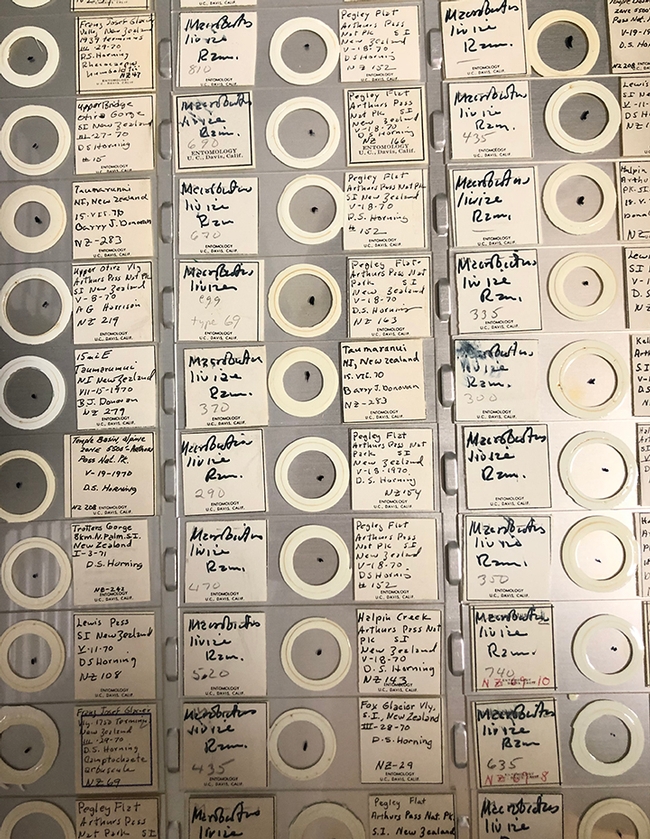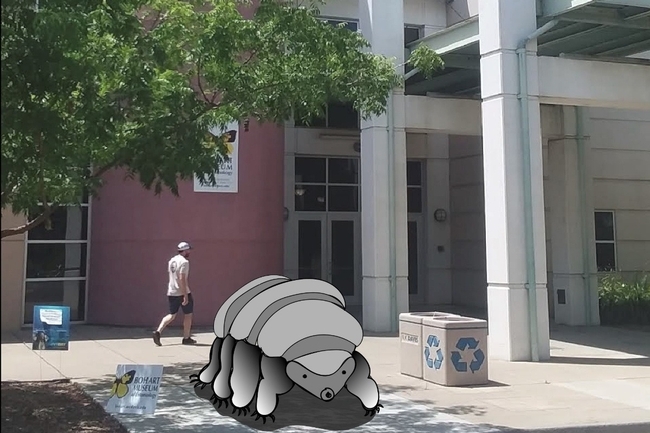
Kimsey, director of the Bohart Museum and UC Davis professor of entomology, hopes to fund the artistic concrete sculpture, measuring about 4 feet by eight feet, as soon as possible. Her GoFundMe account at https://www.gofundme.com/f/waterbear-sculpture seeks $5000.
"Folks, we're on our way," Kimsey wrote on the site. "A private foundation just gave us $5,000 to match our GoFundMe campaign."
Why a tardigrade sculpture at UC Davis? "The reason for this is that we have one of the world's largest tardigrade collections, which was compiled by (senior museum scientist) Steve Heydon's predecessor, Bob Schuster," she said. "Tardigrades are really popular with kids in part because of their representation in the movies Ant-Man and Ant-Man and the Wasp, Star Trek and Family Guy."
She's been in touch with the sculptor Solomon Bassoff (Faducciart) in Roseville. "He did the caterpillar in the Davis Central Park," Kimsey noted.
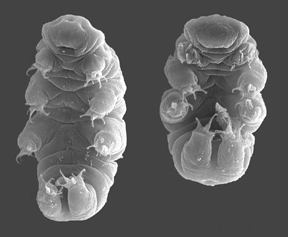
They belong to their own phyllum, the Tardigrada (meaning "slow steppers"), and to date there are some 1,500 described species throughout the world. "Tardigrades can survive high pressures of more than 1,200 atmospheres found in the bottom of the abyss," Kimsey says. "They can tolerate 1,000 times more ionizing radiation than other animals."
The Bohart collection includes some 25,000 slide-mounted specimens. Kimsey and collaborator Carl Johannsen work on a National Science Foundation grant "to database and conserve" the collection. "This collection is the result of years of collecting, mounting, imaging, and identifying by former collection manager Bob Schuster and emeritus professor Al Grigarick and their collaborators," Kimsey points out.
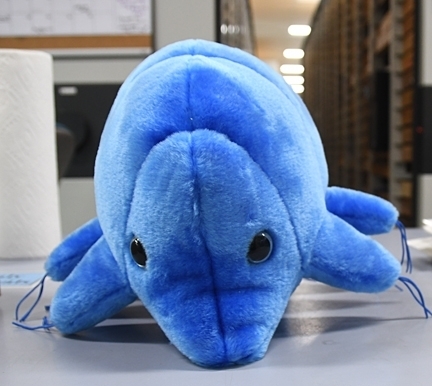
German zoologist Johann August Ephraim Goeze (1731-1793) first described the critters in 1773, referring to them as "kleiner Wasserbär," or "little water bears."
They're easiest to find on lichens and mosses, Kimsey says, but they can also be found on beaches, in the subtidal zone, freshwater sediments, soil, hot springs and even on barnacles. They've been found "high in the Himalayas to down in the deep sea." They've even been found in the interior of Antarctica.
They mostly feed on plants or bacteria "but some are predators on smaller tardigrades," Kimsey says. They use the stylets in their tubular mouth (snout) to pierce "individual plant or bacterial ells or small invertebrates."
Why is the water bear so indestructible? In research published in 2016, geneticist Takekazu Kunieda and his colleagues from the University of Tokyo found that the water bear expresses a tardigrade-specific protein that binds itself to DNA. This acts like a "shield against x-ray radiation, preventing the DNA from snapping apart," according to an article published in Gizmodo.
Says Kimsey: "Tardigrades are awesome. They can dry out completely and then become immortal. In fact, SpaceIL may have left thousands of dried tardigrades on the moon when it crashed earlier this year."
Stuffed toy water bears are also popular in the Bohart Museum's gift shop, which also includes insect-themed books, posters, t-shirts, jewelry, candy, and insect collecting equipment.
The museum, located in Room 1124 of the Academic Surge Building on Crocker Lane, houses nearly 8 million insect specimens, collected globally. It also maintains a live "petting zoo" featuring Madagascar hissing cockroaches, walking sticks and tarantulas.
Meanwhile, the Bohart is bearing up for the water bear sculpture.
Comments on the GoFundMe account include:
- "Remember Bob Schuster fondly, popcorn evenings sorting specimens for the museum when I was a grad student at Davis."
- "If I didn't know Lynn Kimsey, I'd never have known how much I love such a resilient and indestructible ally as the tardigrade. Power to the Bohart Museum and its impacts on so many people!"
- "Great initiative that I am happy to support!"
- "Davis seems like a great place for a tardigrade sculpture! I'm inspired by the tardigradologists & nematologists I've admired there. A eutardigrade seems like it'd be less prone to causing injuries, but I can support a heterotardigrade :)"
- "Robert Schuster, UCD Bohart Museum, was instrumental in my career studying tardigrades. He taught me how to identify the species (known at that time) and how to use the SEM. His tardigrade collection is housed in the Bohart Museum."
- "Tardigrades were some of my childhood friends"
And just think, the water bear sculpture also will make great selfies, just like Robert Arneson's celebrated Egghead sculptures on campus.
The Bohart Museum is open to the public Mondays through Thursdays from 9 a.m. to noon and 1 to 5 p.m., except on holidays. Open houses are held periodically on the weekends; see schedule. More information is available on the website at http://bohart.ucdavis.edu or by contacting (530) 752-0493 or bmuseum@ucdavis.edu.
Attached Images:
